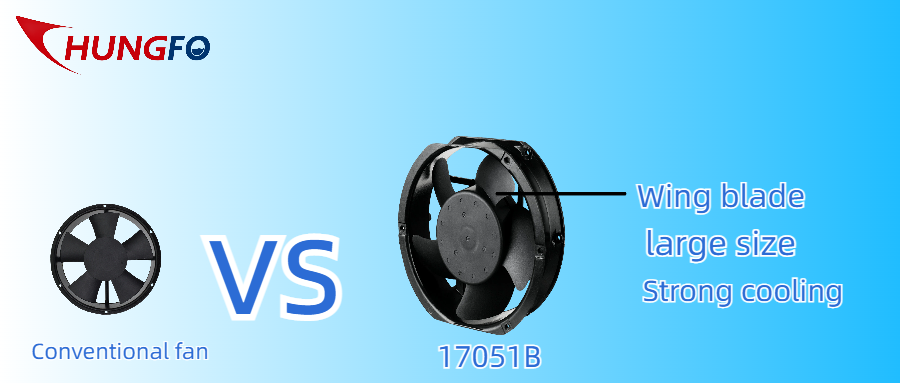Categories
New Blog
Factors that affect the heat dissipation effect of a cooling fan
September 04 , 2023In the selection of fans, the strength of heat dissipation performance is one of the indispensable considerations. So what are the factors that determine the strength of the fan heat dissipation performance?
There are mainly three points: air volume, wind pressure and heat dissipation structure.
Air volume: Air volume refers to the amount of air blown by the cooling fan per unit time, usually expressed in cubic meters per hour (m³/h) or cubic feet per minute (CFM). The larger air volume means that the fan is able to take away more hot air, which provides better heat dissipation.
Our company has a very strong cooling performance of AC brushless cooling fan, first of all, the size of the A17051B fan, which means a larger blade area and a larger wind output, such a design can produce more air flow per unit time, so as to provide greater air volume; In the design of the shape of the fan blade, the feather-shaped fan blade is selected, which can effectively inhale and discharge the air, generate greater thrust, and thus provide higher air volume. In addition, this form of blade flow is large, low noise, which is more in line with the principle of fluid mechanics. Although this fan has no ventilation hole, the reasonable housing design realizes the flow of air and better meets the heat dissipation needs. In general, large size, efficient design fans will usually provide greater air volume. Just like the A17051B, this fan has all the above conditions, so the air volume can be as large as 187.93CFM.

Wind pressure: Wind pressure refers to the ability of the cooling fan to generate wind power, mainly used to overcome resistance and push air through the radiator or cooling structure. The cooling fan needs to overcome the resistance in the radiator to ensure that the air can efficiently pass through the cooling structure, thereby carrying away the heat.
Heat dissipation structure: The heat dissipation structure refers to the heat sink or heat dissipation device used in conjunction with the heat dissipation fan. Its design and structure determine how heat is distributed and dissipated in the radiator. In fact, axial flow fans and centrifugal fans can also be used as part of the radiator to increase air flow and enhance the heat dissipation effect.Axial flow fans are relatively large, relatively simple structure design, suitable for products with simple structure and flow path design; The centrifugal fan has relatively large wind pressure, which is suitable for products with relatively complex structural design and flow path design.
Therefore, the air volume, wind pressure and heat dissipation structure of the cooling fan are related to each other. A cooling fan with a proper cooling structure can provide a larger air volume and wind pressure, providing better cooling effects for the cooling device. When choosing a cooling fan, these factors need to be considered comprehensively to meet the specific heat dissipation requirements.